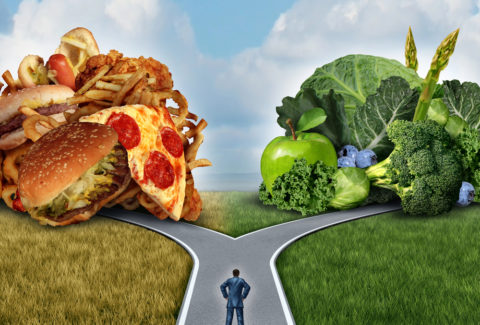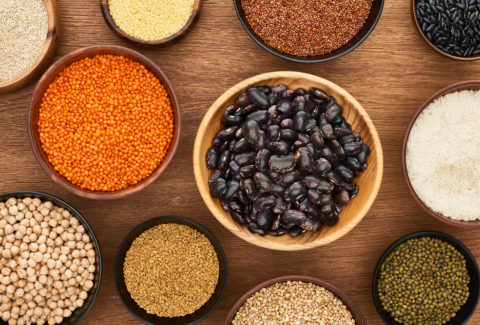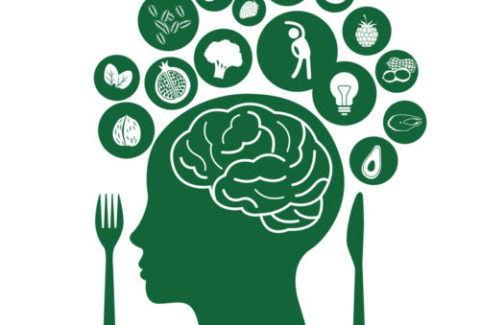The Stages of Fasting: Understanding the Process of Abstaining from Food
Fasting is an ancient practice that has been embraced by various cultures and religions for centuries[1]. In recent years, fasting has gained popularity for its potential health benefits, including improved metabolic health, weight management, and longevity[2]. The fasting process is not a simple linear journey; instead, it involves several distinct stages, each with its unique physiological and psychological effects. In this article, we explore the stages of fasting, shedding light on what happens in the body and mind during this intriguing practice.
Stage 1: The Fed State (0-4 Hours After Eating):
The fed state[3] occurs immediately after a meal when the body is digesting and absorbing nutrients from the food. During this stage, glucose levels rise as carbohydrates are broken down into sugars for energy. Insulin, a hormone produced by the pancreas, is released to help transport glucose into cells for energy or storage. At this point, the body primarily relies on glucose as its main energy source.
Stage 2: Early Fasting (4-24 Hours After Eating):
As the body enters the early fasting stage[4], glucose levels start to decrease, and the body transitions from using glucose to using glycogen, a form of stored glucose in the liver and muscles, for energy[5]. Glycogen storage can sustain the body for several hours, providing energy while fasting begins. During this stage, insulin levels decrease, and the body starts to mobilize stored fat for energy through a process called lipolysis. As fatty acids are released into the bloodstream, they become the primary source of fuel for the body.
Stage 3: The Transition (24-48 Hours After Eating):
During the transition stage, glycogen storage becomes depleted, and the body enters a state of ketosis. Ketosis[6] occurs when the body starts breaking down fatty acids into ketones, an alternative energy source for the brain and other organs. Ketones provide a more stable and sustained energy supply, leading to increased mental clarity and focus for some individuals.
Stage 4: Deep Ketosis (48 Hours to Several Days):
In deep ketosis[7], the body is efficiently using ketones for energy, and hunger pangs may subside due to the body’s reliance on stored fat. Autophagy[8], a cellular process that involves the removal of damaged cells and cellular debris, is believed to increase during this stage, supporting cellular health and longevity.
Stage 5: Prolonged Fasting (Several Days to Weeks):
Prolonged fasting involves extended periods without food intake, typically lasting beyond 72 hours. During this stage, the body’s reliance on stored fat increases significantly, and the metabolic rate may decrease to conserve energy. Fasting for extended periods requires careful monitoring and supervision to avoid potential health risks.[9]
Stage 6: Breaking the Fast (Refeeding[10]):
Breaking a fast is a crucial phase that requires gentle reintroduction of food. After a prolonged fast, the digestive system may be sensitive, and overeating or consuming heavy, unhealthy foods can lead to discomfort or digestive issues. Opting for easily digestible and nutrient-rich foods is essential during this period.
In Sum:
Fasting involves several distinct stages, each with its own impact on the body and mind. From the fed state, where the body relies on glucose from food to the deep ketosis stage, where stored fat becomes the primary energy source, fasting is a dynamic process. Understanding the stages of fasting can help individuals embark on this journey mindfully and safely. Before attempting any extended fast, it is essential to talk to your primary care physician, especially for individuals with pre-existing health conditions. When done responsibly, fasting can offer potential health benefits for everyone. Approaching fasting with knowledge and awareness can lead to a more fulfilling and rewarding experience.
What’s Next:
- Check out our previous articles in this series
- Stay on the lookout for upcoming articles in this series, delving deeper into the world of nutrition and its impact on well-being.
- Gather more information on the role of nutrition in overall health and wellness, staying updated with the latest research and recommendations.
- Continue to have more frequent conversations with your clients about nutrition, understanding potential barriers, and helping them overcome obstacles to optimal eating habits.
We acknowledge that habit change can be challenging, but motivation is a potent force that can be nurtured by guiding our patients through the stages of change. As clinicians, having awareness, understanding, insight, and knowledge about nutrition is key to inspiring positive transformations. This series aims to equip you with the essential tools, so you empower yourself and help your patients and clients do the same on their process to optimal well-being.
Until our next article, let us master how to continue our process of discovery and healing through the power of nutrition.
[1] Lignot, Jean-Hervé, and Yvon LeMaho. “A history of modern research into fasting, starvation, and inanition.” Comparative physiology of fasting, starvation, and food limitation. Berlin, Heidelberg: Springer Berlin Heidelberg, 2012. 7-23.
[2] Golbidi, Saeid, et al. “Health benefits of fasting and caloric restriction.” Current diabetes reports 17 (2017): 1-11.
[3] Vieira, Alexandra Ferreira, et al. “Effects of aerobic exercise performed in fasted v. fed state on fat and carbohydrate metabolism in adults: a systematic review and meta-analysis.” British Journal of Nutrition 116.7 (2016): 1153-1164.
[4] Vasim, Izzah, Chaudry N. Majeed, and Mark D. DeBoer. “Intermittent fasting and metabolic health.” Nutrients 14.3 (2022): 631.
[5] Roumans, Kay HM, et al. “A prolonged fast improves overnight substrate oxidation without modulating hepatic glycogen in adults with and without nonalcoholic fatty liver: A randomized crossover trial.” Obesity 31.3 (2023): 757-767.
[6] Arora, Niraj, et al. “Intermittent fasting with ketogenic diet: A combination approach for management of chronic diseases.” Clinical Nutrition ESPEN 54 (2023): 166-174.
[7] Smith, Michael Paden. “Medical and Therapeutic Applications of Ketosis: An Overview.” Health Science Journal 14.1 (2020): 1-10.
[8] Vargas, Jose Norberto S., et al. “The mechanisms and roles of selective autophagy in mammals.” Nature reviews Molecular cell biology 24.3 (2023): 167-185.
[9] Tripolt, Norbert J., et al. “Glucose Metabolism and Metabolomic Changes in Response to Prolonged Fasting in Individuals with Obesity, Type 2 Diabetes and Non-Obese People—A Cohort Trial.” Nutrients 15.3 (2023): 511.
[10] Gabriel, Sahmla, et al. “A Six-Week Follow-Up Study on the Sustained Effects of Prolonged Water-Only Fasting and Refeeding on Markers of Cardiometabolic Risk.” Nutrients 14.20 (2022): 4313.







